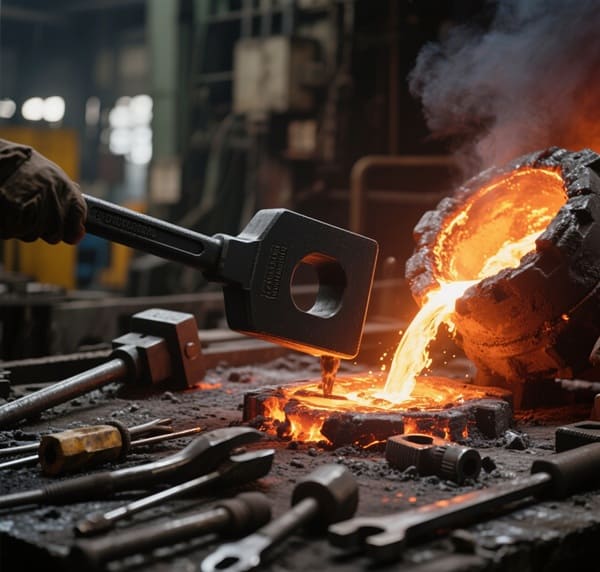How Silicon Nitride (Si3N4) Resists Extreme Heat in Harsh Environments
Silicon Nitride is a high-performance ceramic material widely recognized for its outstanding thermal stability, remarkable mechanical strength, and excellent chemical resistance. These qualities make it uniquely suited for demanding environments where materials must reliably withstand extreme heat, mechanical stress, and corrosive conditions. Industries such as aerospace, automotive, power generation, and semiconductor manufacturing rely heavily on Si3N4 due to its ability to maintain structural integrity and performance under harsh operating conditions. This article delves into the mechanisms behind Si3N4’s heat resistance, its critical physical and mechanical properties, manufacturing processes, and diverse industrial applications, providing engineers, designers, and technical decision-makers with a comprehensive understanding of why this advanced ceramic continues to play a crucial role in modern high-temperature technologies.
At Advanced Ceramic Hub, we specialize in high-quality silicon nitride ceramic, ensuring optimal performance for industrial and scientific applications.

What Is Silicon Nitride?
Silicon Nitride is a compound made of silicon and nitrogen atoms arranged in a strong covalent bond network. This structure gives Si3N4 its notable hardness, high melting point, and low thermal expansion. It is a lightweight ceramic widely used in engineering fields demanding durability under thermal and mechanical stress.
Si3N4 Basic Physical Properties:
| Property | Value | Unit | Description |
| Density | ~3.2 | g/cm³ | Lightweight ceramic material |
| Melting Point | >1900 | °C | Very high melting temperature |
| Thermal Conductivity | 20–30 | W/m·K | Efficient heat transfer compared to other ceramics |
| Thermal Expansion Coefficient | 2.8 | ×10⁻⁶/K | Low thermal expansion ensures dimensional stability at high temperatures |
| Fracture Toughness | 5–7 | MPa·m^0.5 | High resistance to crack propagation |
| Flexural Strength | 700–1000 | MPa | Excellent mechanical strength |
| Young’s Modulus | 300–320 | GPa | High stiffness and rigidity |
| Hardness (Vickers) | 15–18 | GPa | Very hard, resistant to wear and abrasion |
| Chemical Resistance | Excellent | — | Resistant to oxidation, acids, and alkalis |
| Operating Temperature Limit | Up to 1400–1500 | °C | Can operate continuously in very high temps |
Explore our high-quality silicon nitride ceramic.
How Does Silicon Nitride Resist Extreme Heat?
Si3N4’s ability to resist extreme heat comes from its high melting point and low thermal expansion coefficient, which minimize thermal stress under rapid temperature changes. Its strong covalent bonds maintain structural integrity even above 1900°C. Furthermore, Si3N4 exhibits excellent thermal shock resistance, meaning it can endure sudden temperature fluctuations without cracking.
Key Heat-Resistance Mechanisms of Si3N4:
- High melting point maintains the material phase at elevated temperatures
- Low thermal expansion reduces internal stress from heat
- Thermal shock resistance prevents crack formation
- Chemical stability prevents oxidation and degradation at high temperatures
What Are the Mechanical and Thermal Properties That Enable Its Performance?
Beyond its heat resistance, Si3N4 exhibits hardness, fracture toughness, and thermal conductivity, enabling it to perform reliably in harsh environments. It is much tougher than other ceramics, which helps resist cracking under mechanical load at high temperatures. Its thermal conductivity helps dissipate heat efficiently, preventing localized overheating.
Mechanical and Thermal Properties of Si3N4:
| Property | Range | Unit | Description |
| Fracture Toughness | 7-10 | MPa·m^0.5 | Resists crack propagation |
| Hardness | 15-18 | GPa | Resists wear and abrasion |
| Thermal Conductivity | 20-30 | W/m·K | Efficient heat dissipation |
| Operating Temperature | Up to 1200 | ℃ | Suitable for prolonged heat exposure |
What Industrial Applications Benefit from Silicon Nitride’s Heat Resistance?
Si3N4 is widely applied where components face high temperatures, mechanical stresses, and corrosive environments. Its use ranges from aerospace engine parts to automotive components, semiconductor manufacturing, and cutting tools.
Industrial Applications and Advantages:
- Aerospace Engines: Lightweight, withstands extreme heat and stress
- Automotive Engine Components: Durable, heat-resistant, and wear-proof
- Semiconductor Industry: Chemically stable, tolerates high process temperatures
- Cutting Tools: Maintains hardness and sharpness at elevated temperatures
How Is Silicon Nitride Manufactured and Processed for High-Temperature Use?
Silicon Nitride (Si₃N₄) is produced through advanced ceramic techniques to ensure high density, thermal stability, and mechanical strength. The general process includes powder preparation, forming, sintering, and optional hot isostatic pressing (HIP). These methods are optimized to create components with a uniform microstructure and minimal porosity, which is critical for high-temperature reliability.
Common Manufacturing Processes for Si₃N₄:
| Process | Advantages | Typical Applications |
| Hot Isostatic Pressing | Very high density, minimal defects | Turbine blades, high-load parts |
| Injection Molding | Complex shapes, good for small parts | Nozzles, miniature components |
| Pressureless Sintering | Cost-effective, scalable production | Bearings, structural insulators |
| Reaction-Bonded Si₃N₄ | Net-shape capability, less shrinkage | Kiln supports, thermal insulation |
These processes allow manufacturers to match the properties of Si₃N₄ to specific application needs in aerospace, automotive, and energy sectors.
How Does Silicon Nitride Compare to Other High-Temperature Ceramics?
Compared to other advanced ceramics like alumina (Al₂O₃), zirconia (ZrO₂), and silicon carbide (SiC), Silicon Nitride (Si₃N₄) demonstrates a uniquely balanced combination of properties. It offers exceptional thermal shock resistance—meaning it can withstand rapid temperature changes without cracking—along with high fracture toughness and sufficient chemical stability in aggressive environments. These qualities make Si₃N₄ the material of choice for components exposed to extreme thermal gradients and mechanical stress, such as turbine rotors, engine parts, and semiconductor handling tools.
Comparison of High-Temperature Ceramics:
| Material | Max. Operating Temp (°C) | Flexural Strength (MPa) | Fracture Toughness (MPa·m¹ᐟ²) | Thermal Shock Resistance | Chemical Stability | Typical Applications |
| Si₃N₄ | 1200–1400 | 800–1000 | 6–8 | Excellent | Good | Turbines, cutting tools, ball bearings |
| Al₂O₃ | 1000–1200 | 300–400 | 3–4 | Poor | Excellent | Electrical insulators, wear-resistant parts |
| ZrO₂ | 1000–1100 | 900–1200 | 5–10 | Excellent | Moderate | Oxygen sensors, medical implants |
| SiC | 1400–1600 | 400–600 | 3–4 | Moderate | Good | Seals, heat exchangers, abrasives |
Si₃N₄’s superior mechanical strength and resistance to thermal fatigue enable long-term performance in critical applications where other ceramics might crack, degrade, or fail.
Request a custom quote for high-quality silicon nitride ceramic.
What Are the Future Trends in Silicon Nitride Development?
The development of Silicon Nitride (Si₃N₄) is advancing rapidly, driven by the need for materials that can withstand increasingly harsh conditions. Researchers are exploring ways to push the performance boundaries of Si₃N₄ through material innovation, advanced processing, and integration into cutting-edge manufacturing technologies. These developments are expected to unlock new applications in aerospace, power electronics, and beyond.
Key Trends in Si₃N₄ Advancements:
- Nanoscale Si₃N₄ Composites: Enhanced strength and fracture toughness are being achieved by reinforcing Si₃N₄ with nano-sized secondary phases (e.g., graphene, nano-ZrO₂).
- Additive Manufacturing (3D Printing): Emerging 3D printing techniques allow the fabrication of complex Si₃N₄ geometries, reducing material waste and enabling customized parts for medical, aerospace, and semiconductor industries.
- Surface Coatings and Functionally Graded Materials: New thermal and wear-resistant coatings improve oxidation resistance and prolong service life under cyclic thermal loading.
- Hybrid Ceramics for Multifunctional Use: Combining Si₃N₄ with other ceramics or metals (e.g., SiC–Si₃N₄ or Si₃N₄–Al) offers tailored properties for multifunctional performance in harsh environments.
- Integration into Semiconductor Devices: As microelectronics push into high-power and high-frequency domains, Si₃N₄’s dielectric properties and thermal reliability make it increasingly suitable for substrates and packaging materials.
These innovations are setting the stage for the next generation of high-performance ceramics, where Si₃N₄ will play a pivotal role in extreme-condition reliability.
FAQ
| Question | Answer |
| What is the maximum temperature Si3N4 can handle? | Up to and beyond 1200°C for prolonged use |
| Is Si3N4 resistant to thermal shock? | Yes, it has excellent thermal shock resistance |
| What are the limitations of Si3N4? | Difficult and costly to machine compared to metals |
| Can Si3N4 replace metals in structural parts? | In many cases, yes, depending on load and design requirements |
Conclusion
Silicon Nitride (Si₃N₄) stands out as a vital material for demanding applications that involve extreme heat, mechanical loads, and chemically aggressive environments. Its exceptional combination of thermal shock resistance, high strength-to-weight ratio, and long-term stability gives it a unique edge over other advanced ceramics like alumina, zirconia, and silicon carbide. As manufacturing methods such as hot isostatic pressing and additive manufacturing continue to evolve, Si₃N₄ is becoming more accessible and customizable for precision parts in aerospace, automotive, energy, and electronics.
For engineers, designers, and decision-makers seeking a reliable and future-ready solution, Silicon Nitride is more than just heat-resistant—it’s a platform for innovation. At Advanced Ceramic Hub, we’re committed to providing high-performance Si₃N₄ materials and components that meet the rigorous demands of modern industry, backed by scientific expertise and scalable production capabilities.
Looking for high-quality silicon nitride ceramic? Contact us today!
